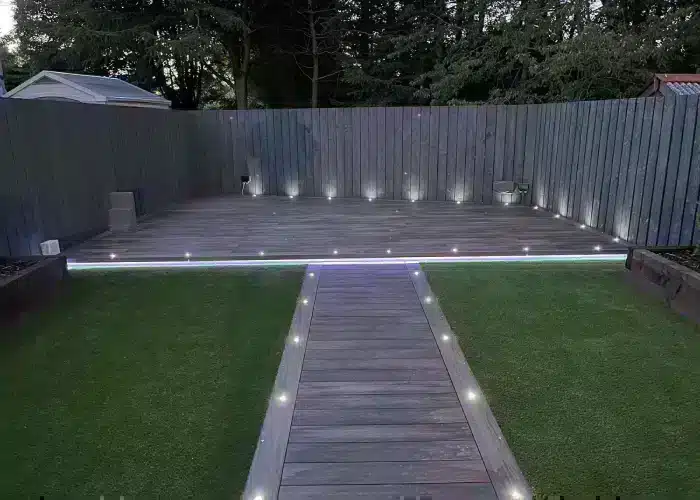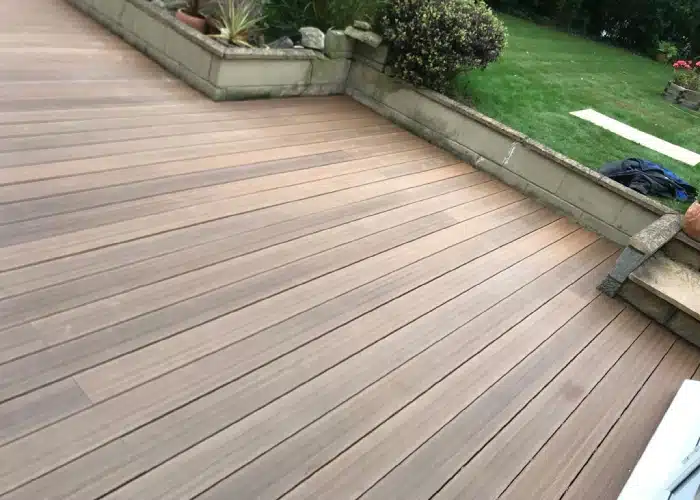Small Garden Decking Ideas on a Budget
Taking the time and effort to add waterproofing to the substructure and frame of your composite decking area will extend its service life. The spaces between your composite decking allow for easy water drainage from the surface of your decking. It allows water to drain, thereby keeping the decking dry. But, this may not be suitable if you want to do anything under the composite boards or need to keep your decking joists free from moisture, we do share some get ideas to keep you decking joist free of moisture in another article. To keep underneath your decking dry, you have to prevent water from draining through the spaces or onto your joists. How can you waterproof under composite decking boards?
Why You Should Waterproof Under Composite Decking Boards
Waterproofing under composite decking boards can prolong the lifespan of the decking joists. The gaps left between composite decking allow the easy drainage of water from the decking.
This water can drain on to the wooden decking joists underneath and when this repeatedly happens over the years, it will weaken the joists. Waterproofing under the composite decking will keep the joists from absorbing minimal water and lengthen its service life.
Additionally, when the underside of the decking is dry, you can use the area beneath the decking for other thing such as storage or maybe another outdoor living area. You may also be installing a view point and need to waterproof your under decking to extend the life span of your subframe.
Ways to Waterproof Under Composite Decking Boards
Composite Decking Flange
First, you can waterproof under composite decking boards by using flange. Deck flange are starting to gather some traction in the decking sector and some fitters are using these to waterproof the under of there decking, removing the need for flashing or DPC tape on the joists.
The gaps between the composite decking allow water to flow easily. To waterproof the underside of the composite board, use rubber flanges to fill the gaps. Applying flanges on the spaces between the decking will keep water from dripping under the composite decking boards. Some flanges are designed to serve as a mini waterway to flow toward the decking edges.
Another great benefit to deck flanges is that they also keep the gaps between the decking boards clean and eliminate some other methods in which may get dirt or debris trapped in diverting and protecting the frame from water.
Under Deck Ceilings System
A second way to waterproof under composite decking is by attaching a ceiling system beneath the decking. The ceiling keeps the underside of the decking dry by drawing water away from the decking. These ceiling systems often use vinyl or aluminium panels to dispose of the water that drains through the decking gaps. The water is channelled away, thereby keeping the underside of the decking dry.
The simplest way to explain a under deck ceiling system is they a ceiling gutter. They consistent of protecting your ledge board with rubber membrane type material that is fitted onto the exposed areas of your ledge board, you then attach a water divertor and a rubber membrane type material collator in which water will flow into these, not forgetting to seal around and near the divertor you have put in place.
When fixing you will need use galvanised nails and then simple attached a gutter around your joists. Please note you may need a downspout gutter to ensure correct drainage. There fairly simple to set up and our comments aren’t installation steps but a guidance to what an under deck ceiling systems is and consists off and how they work. We would always recommend using these points and speaking to a professional installer.
The drawback of under decking ceiling systems more so when using vinyl is its longevity. Vinyl under celling deck systems are temperamental to weather changes, weakening over time with high temperatures, they also lack the strength for heavy rainfall and snow, due to this they can sag, warp or break. Another thing with under ceiling deck system is to ensure good air flow and this must be checked, as poor airflow wont allow your subframe and joists to dry.
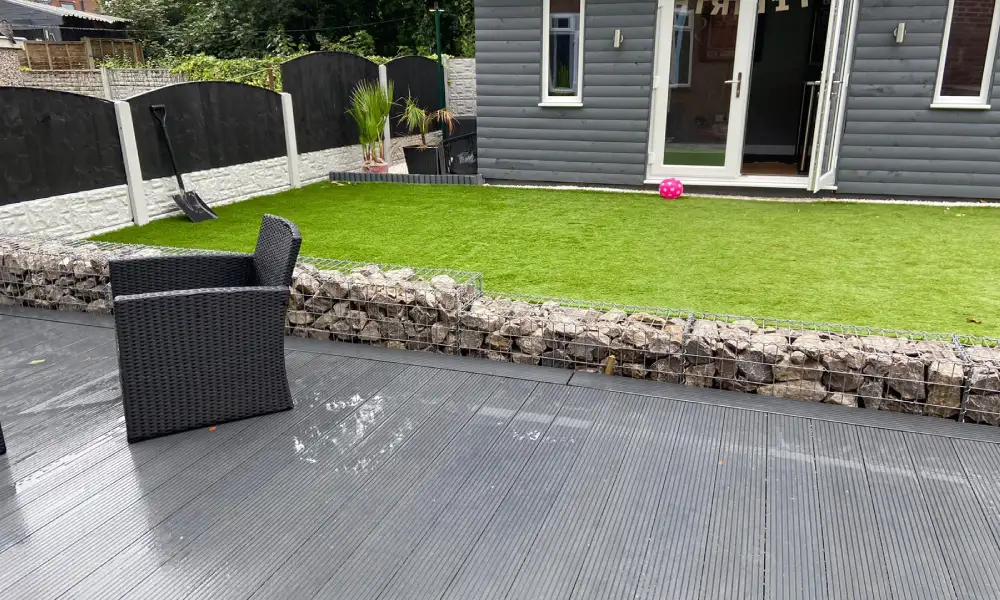
Interlocking decking systems
Interlocking decking system like aluminium decking systems are a great option to ensure a water tight surface. Some aluminium decking interlocking systems are waterproof and connect in a tongue and groove connection. We have read up online that new pressure treated wood ACQ for example can be corrosive to aluminium decking so untreated wood is the preferred joist option and since the interlocking aluminium system is waterproof you minimise the amount of moisture on or near the joist over the year of installation
Its worth pointing out when researching or search online for Interlocking decking systems, most are composite decking tiles, now these can’t be constructed on wooden joists or laid directly on the ground, so you would need a a solid and level base e.g. paving, concrete or even you existing wooden deck.
Composite decking tiles aren’t completely waterproof and do need drainage to stand the test of time, but if laid on a concrete base they can offer in our view a better water resistant option and this is why they are worth a mention.
Under-deck drainage systems
Under deck drainage systems are something newish to the market and mainly installed from our research over in the USA, so much so we had to read up on them in all honesty. Not tried and tested yet to our knowledge in the U.K., they do look a good option when trying to waterproof your under deck or subframe.
They work by cover your decking joists with a rubber membrane which loops and curved are they bottom to capture water, once water captured they then flow to a funnel and drain off and away from your subframe.
As mentioned an under-decking drainage system consists of a rubber membrane which loops and curves at the bottom when installed, like a u shape capturing and water, the captured water then flows to a waterproof gutter on or below the composite decking, often done at the same time of installing the composite decking. The gutter system is installed on the decking joists, using a rubber membrane that is nailed or stapled to the joists completely covering them in the process, they are designed to divert water away from the decking joists and beams. This prevents wooden joists from absorbing water or moisture while keeping the underside of the decking dry.
Now as great as they are the only issue with found with this system is that dirt and debris is able to pass through and we do question the amount of rainfall in which this system can support, but at the moment they are new and the verdict isn’t in, but we definitely will be giving them a try.
Composite/HDPE Joists
If water or moisture protection under your decking and subframe is essential there is an option of changing and upgrading your materials to composite joists. Composite/Plastic or HDPE joists, all are pretty much the same just searched and called different, are joists, battens and even posts that absorb minimal water and will never rot or decay.
Due to plastic/composite joists, batten or post resistance to water and moisture you eliminate the the requirement and need to provide a waterproof solution for you your subframe. As mentioned they will not rot, decay or experience structure issue or failure due to moisture damage, offering increase strength and longevity of your frame and under deck.
The only down side is cost, but having said this using any of the options provided, some are cheaper than others, but don’t forget to calculate the time or labour to complete these jobs and task. If you way all up on time, longevity and money, there not badly price is comparison.
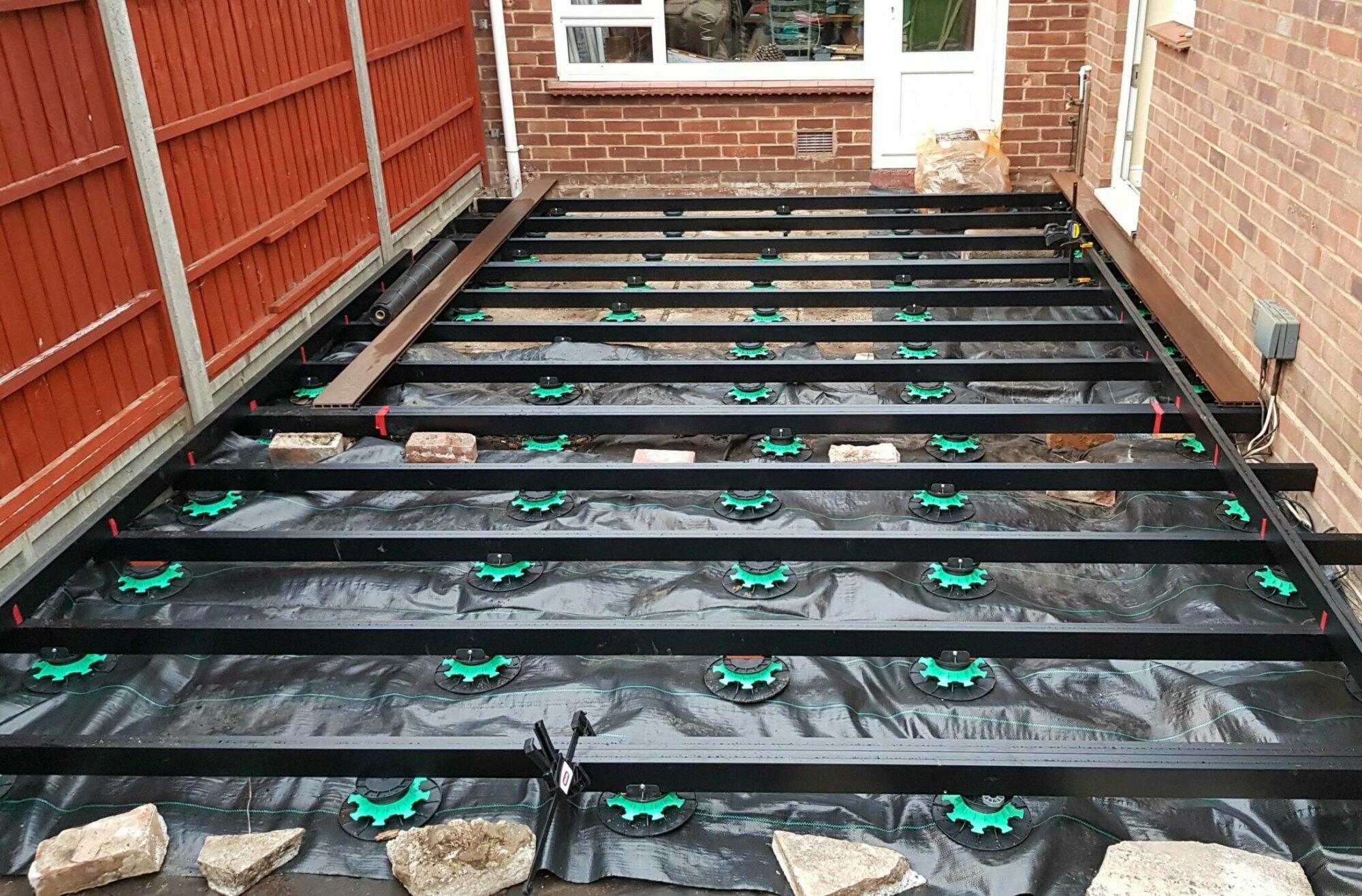
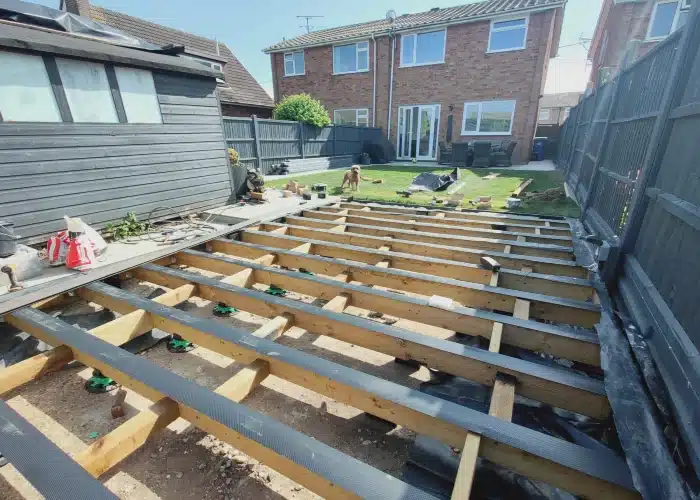
Damp Proof Course
Many professional decking installers and landscape gardeners that regularly purchase composite decking boards will place damp proof course (DPC) tape on to the top and bottom of the joists. Any water dripping through the decking board gaps simply bounces off the DPC tape preventing any water from penetrating the joists. In addition, some professional installers go further and source a colour match paint or sealant similar to the decking colour and add an extra layer of water protection over the top of the DPC tape.
Conclusion
There are many options that you can choose to help reduce moisture under your decking or completely waterproof your subframe and under deck. Some of our favourites would be deck flange or upgrading your material to composite joists. Upgrading your materials completely eliminate rot, decay and moisture absorption, yet it can be costly.
On a cost focus only our favourite is installing deck flange, they are seeing excellent results and feedback from installers, look great and help with maintenance.
Reasons Why Composite Deck Can Warp



